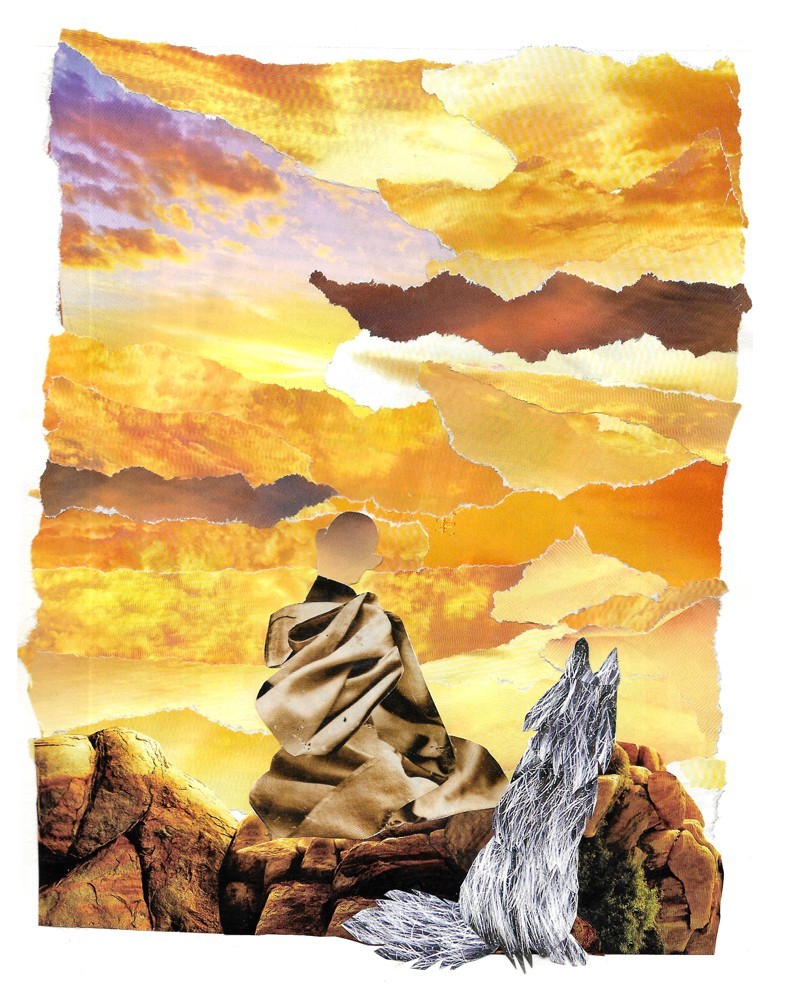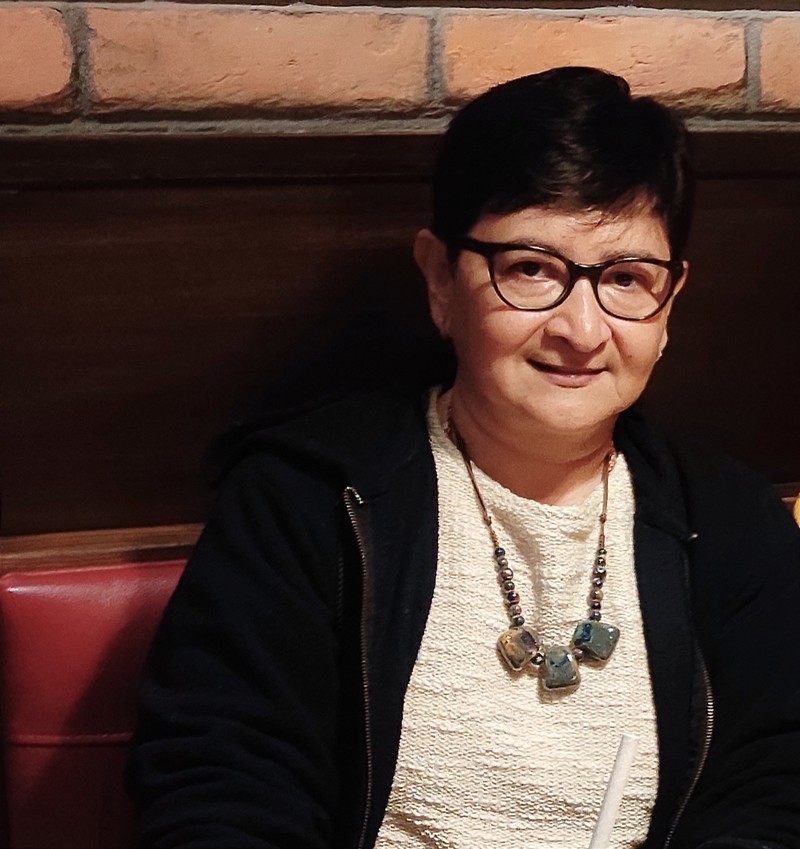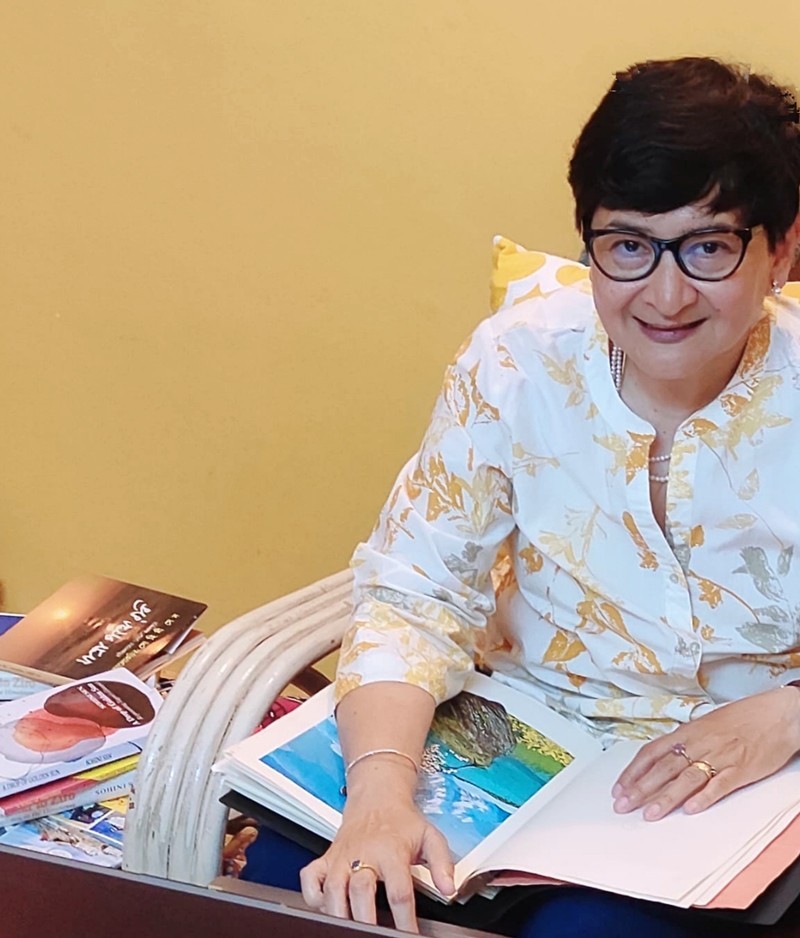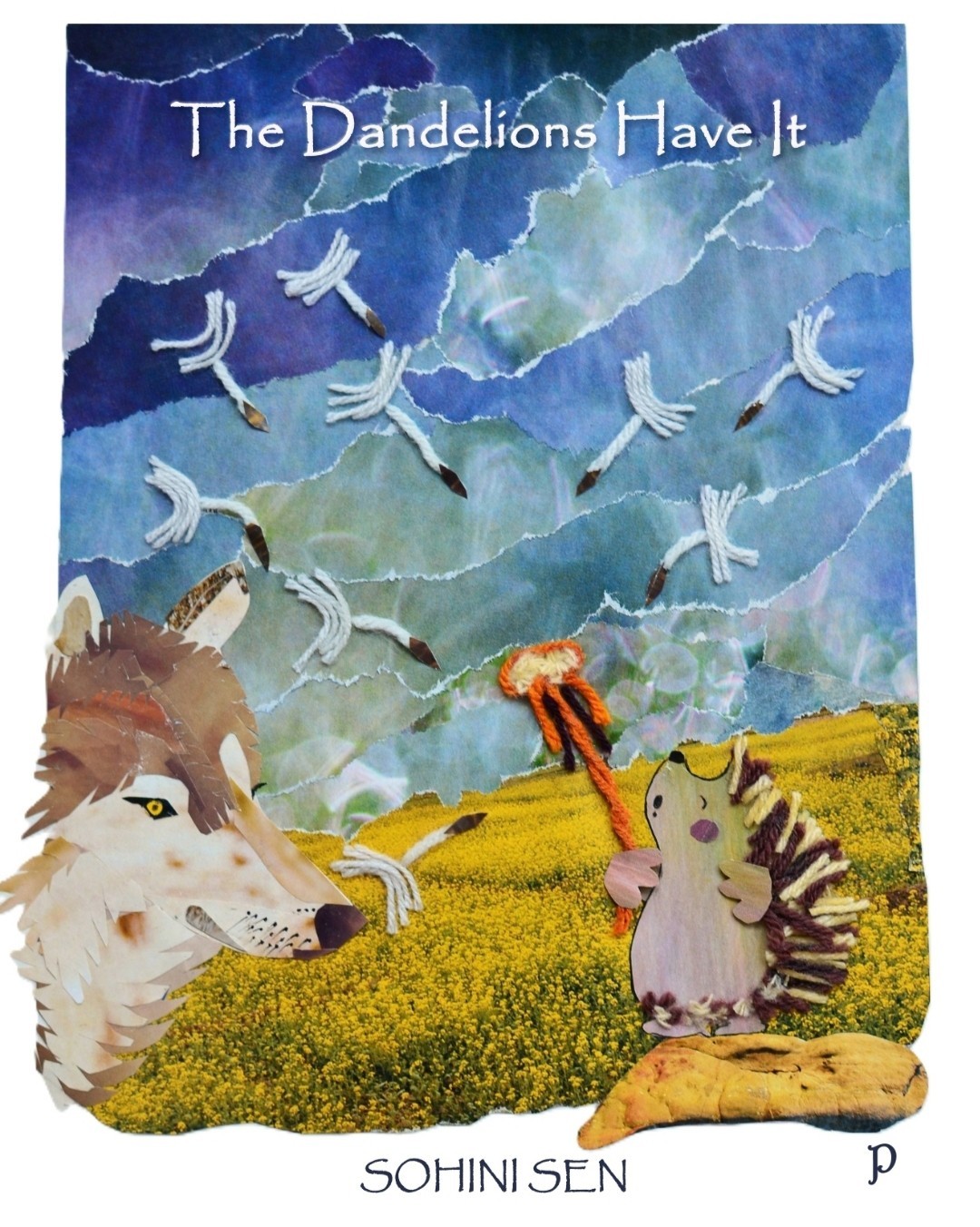The Dandelions Have It: Sohini Sen’s Himalayan fable of a hedgehog, hope, and healing through magic realism
The Dandelions Have It is the coming-of-age story of Quillo, the hedgehog, uniquely illustrated with over 40 mixed-media collages. Author Sohini Sen talks to Sujoy Dhar about the story's themes of love for our Blue Planet, friendship, self-acceptance, and 'growth' that inevitably comes with misadventures and dollops of humour.

The Dandelions Have It is your ninth book to be published?
Yes. After eight published books, The Dandelions Have It represents a new creative direction for me. It follows the visual storytelling approach of my travelogue, Ladakh: A Photo Travelogue, which I presented in an unconventional comic-strip format, and the intimate prose of my novella, A Sense of Magnolias.
 Photos courtesy: Sohini Sen
Photos courtesy: Sohini Sen
Over 40 mixed-media collages add texture—literally, and figuratively—and richness to the story, immersing readers in Quillo’s whimsical world in a fresh, visual way.
What is its main theme?
You could call it the coming-of-age story of a hedgehog. Set in a charming corner of the Himalayas, this tale follows Quillo, a young hedgehog who learns life’s lessons surrounded by a lovable, quirky group of animal friends. The story's themes of love for our Blue Planet, friendship, sharing, self-acceptance, and most of all, 'growth' that inevitably comes with misadventures and dollops of humour, should invite readers of all ages to find a bit of themselves in Quillo’s journey.
The genre is stated as Illustrated Literary Fiction, but sounds like magic realism, too?
Yes, absolutely! Magic realism allows the story to glide through multiple levels with ease. The younger readers may just choose to tumble with Quillo and his friends from one adventure to the next, laugh at him one moment, quietly wipe a tear at another, and watch the catch of their own breath at the end. The older readers may just pause suddenly to reflect: have they, too, been enveloped by the gentle presence and kindness of a loving mentor in a dark phase of their lives? Met a human who sought safety in changing his true colours like the chameleon? Were they seeking external validation like Yaeko, the yak, at the cost of their freedom, and against their grain? Is the story of Quillo their story, really?
 Photos courtesy: Sohini Sen
Photos courtesy: Sohini Sen
Most of all, is it not time to go back to one’s roots, to take care of Nature, and to learn to live right, again?
This, then, is a book for both children and adults?
Like C.S. Lewis said, ‘’A children's story that can only be enjoyed by children is not a good children’s story in the slightest.’’ The Dandelions Have It is a tale for young adults, and adults who are forever young at heart, anywhere in the world: a funny, yet warm, tapestry of adventures, emotions, and an abundance of love.
The introduction to your book, or ‘How It Began’, is quite different, and interesting…
I wanted to use some of the 'warm and fuzzy' threads from all that I read as a child, and a teen, to weave this story. It is important to give this background of the author to set the tone. I also wanted to bring in the idea of the world as a stage, where we all play our parts, with limited freedom to improvise. But when we are living our lives, we forget we are only playing roles. We start living it as if it were real.
The chapters are named after elements…
I am glad you asked! The naming is significant. Air, for example, predominantly deals with laughter and a lightness of being, while Earth is all about grounding, inter-connectedness, and much more.
The two main characters in The Dandelions Have It are a wolf and a hedgehog. A very unlikely friendship, would you say?
It sure helps that the wolf is vegan! But humour apart, when we allow ourselves to be ‘open’, we humans form such instant, yet deep bonds, too. These are unusual, and rare friendships irrespective of age gaps. I have had them, I am sure you have, too.
 Photos courtesy: Sohini Sen
Photos courtesy: Sohini Sen
We humans tend to, and are even taught to, chase and find purpose in life. But philosophers down the ages teach us to ‘Just be’. Shri Ramana Maharshi said this as ‘Summa iru’ (be still). Thich Nhat Hanh taught us how to live in the moment. Animals do this by instinct, and flow with what feels right.
Is this the first time that collages have been used to illustrate adult fiction?
Yes, this is the first time collages, with definite cross-generational appeal, have been used for literary fiction.
Why did you decide to use collages?
For one, to break the mould. Two, I have always been fascinated by this art form, and it seemed easier than painting/getting an illustrator. Three, the art of collage making felt like life: every moment we are being shredded apart, and yet we constantly try to put all the pieces back together, do we not?
After I had plunged in, I realised how complex a task it was, and I assure you, it is far more complex than it seems after printing! Some of the A4-size collages required the use of 90-100 little pieces of paper. I have used chilli flakes, buttons, beads, moulding clay, and wool, too.
When you do collages as just art, you have a lot of freedom of thought. But when these are to illustrate your story, fidelity to the context is crucial. For example, Quillo, the baby hedgehog, is growing. When hedgehogs are very young, their quills are mostly soft and white. Then these gradually turn to light, then deep brown, strong, and prickly. As he grows, the depiction changes accordingly. He looks the strongest, and most adult, in his last image, with Silver.
There are four instances where the protagonists have been depicted as silhouettes: to show distance, darkness, crisis, and perspective.

Why did you set your tale amid the Himalayas?
Much of my inspiration comes from my experiences as a travel writer, and my deep connection with nature. The majesty of the rugged Himalayas, and the hardships of travelling among them, have taught me to treat my fellow beings with kindness, and my own self with quite a bit of irreverence. In The Dandelions Have It, these influences bring an authentic sense of place, and a gentle wisdom that I hope will resonate with kindred souls.
Everyone seems to be writing books these days…
The writing scene is perhaps busier than it has ever been, but how many of our current authors and poets would stand the test of time? A major portion of all the creativity that we see across genres now—be it film or music or writing or even stand-up comedy—is emerging from various agenda-based spaces. We are passing through an age when
“Things fall apart; the centre cannot hold…
The best lack all conviction, while the worst
Are full of passionate intensity.”
The best, and perhaps the most lasting literature, or art, is that which celebrates life, and is an authentic representation of being, warts and all. Such great writing has a certain timeless appeal that social media would never have.
You mention social media. Now that Artificial Intelligence (AI) is taking over all forms of creativity, what is the future of authors or artists?
Technologies change and evolve continually, but the philosophy of life and profound love remain unchanged through centuries. Surrounded by the destruction we have caused in Nature, and in a world continually being broken into fragments, we thirst for words that hug our hearts, books that heal our souls. I feel that the need of the hour is not Artificial Intelligence (AI), but Emotional Intelligence (EI). And of course, the hope that “What you do makes a difference,” as Jane Goodall said. Words are all I have to make that difference, and in The Dandelions Have It, I have tried the best I could.
IBNS
Senior Staff Reporter at Northeast Herald, covering news from Tripura and Northeast India.
Related Articles

AI firm Anthropic to open Bengaluru office in 2026; CEO Amodei meets PM Modi
Anthropic CEO Dario Amodei met with Prime Minister Narendra Modi in New Delhi on Saturday to discuss the company’s plans to expand operations in India, including the opening of a new office in Bengaluru.

Narendra Modi discusses AI, innovation with Qualcomm CEO Amon
Indian PM Narendra Modi met Cristiano R. Amon, President and CEO of Qualcomm, and discussed India’s advancements in artificial intelligence, innovation and skilling.

László Krasznahorkai: Meet the Hungarian author who won the 2025 Nobel Prize in Literature
Hungarian writer László Krasznahorkai has been awarded the 2025 Nobel Prize in Literature for “his compelling and visionary oeuvre that, in the midst of apocalyptic terror, reaffirms the power of art,” the Swedish Academy announced on Thursday.

Hungarian author László Krasznahorkai wins 2025 Nobel Prize in Literature
Hungarian novelist László Krasznahorkai, known for his darkly poetic, labyrinthine prose and haunting depictions of a collapsing world, has been awarded the 2025 Nobel Prize in Literature, the Swedish Academy announced on Thursday.
Latest News

Pakistan: Bomb explosion in Jaffarabad leaves 10-year-old boy dead

Israel: Nova Festival survivor who saw partner killed by Hamas found dead near Tel Aviv

NDA finalises Bihar seat-sharing deal after weeks of talks; BJP, JDA to contest 101 seats each

New Delhi: Indian Army to host UNTCC Chiefs’ Conclave tomorrow

